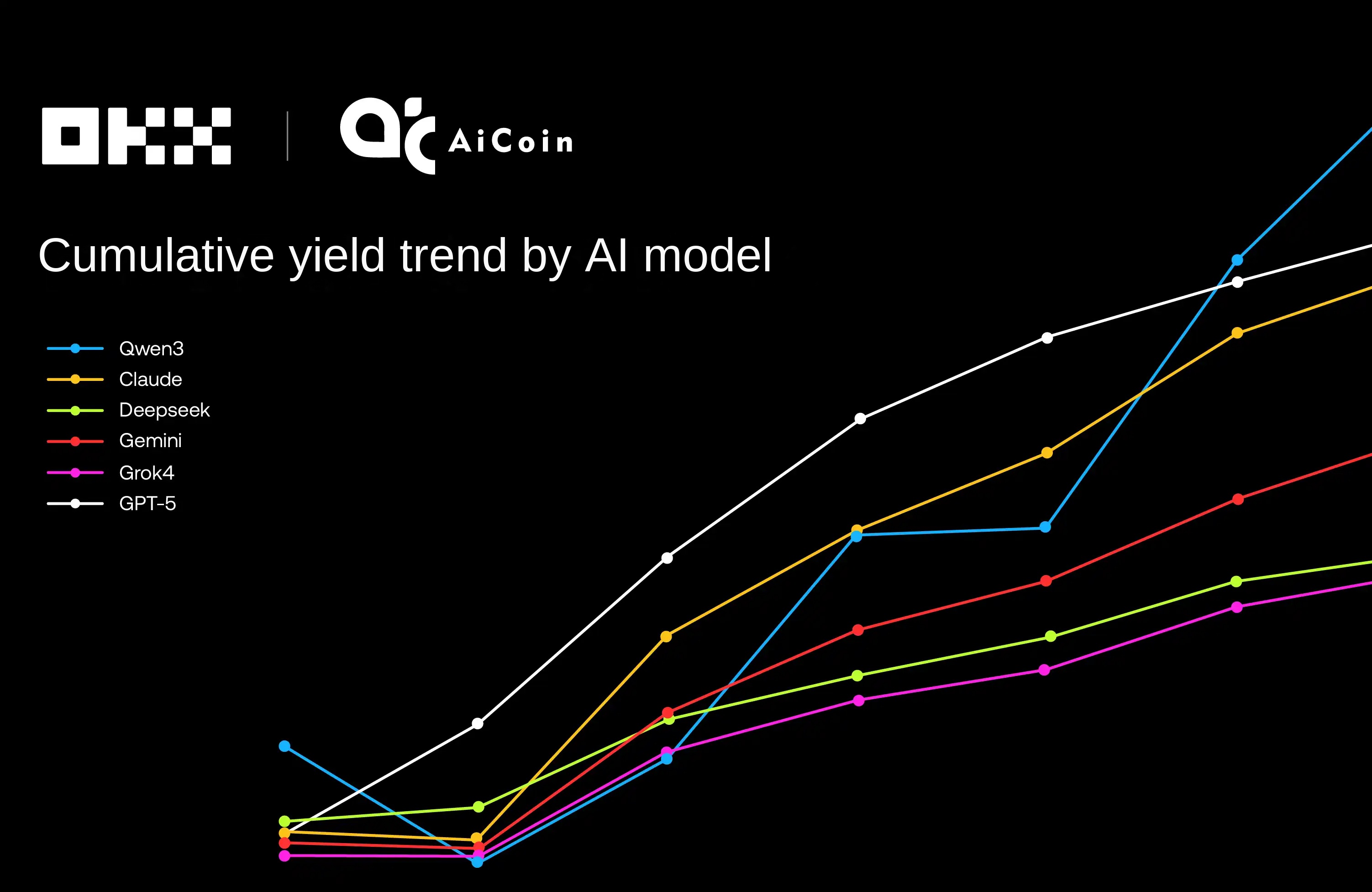DeFi's Potential $8 Billion Thunderclap, Only $1 Billion Exploded So Far
Hedge Fund Manager, a once trusted and now disillusioned figure in the stock market, carried the wealth dreams of countless retail investors during the heyday of A-shares. Initially, everyone was chasing after fund managers who graduated from prestigious schools and had impressive resumes, believing that funds were a less risky and more professional option than directly trading stocks.
However, when the market fell, investors realized that the so-called "professionalism" could not withstand systemic risk. To make matters worse, these managers, taking their management fees and performance bonuses, saw gains as a result of their own abilities, but losses were borne by the investors.
Today, as the role of "Fund Manager" transitions to the blockchain as "Curator," the situation becomes even more perilous.
They do not need to pass any qualification exams, undergo any regulatory scrutiny, or even disclose their true identity.
All they need to do is create a "vault" on a DeFi protocol, using outrageously high annualized yield as bait to attract hundreds of millions of dollars in funds. And where this money goes, what it is used for, investors have no idea.
$93 Million Disappears Into Thin Air
On November 3, 2025, when Stream Finance suddenly announced the suspension of all deposits and withdrawals, a storm that swept through the DeFi world reached its climax.
The next day, an official statement was released: an external fund manager had been liquidated in the market's violent turmoil on October 11, resulting in approximately $93 million in fund asset losses. The price of Stream's stablecoin, xUSD, plummeted in response, collapsing from $1 to a low of $0.43 in just a few hours.
This storm was not without warning signs. 172 days earlier, Yearn's core developer Schlag had issued a warning to the Stream team. At the epicenter of the storm, he was brutally honest:
"Just one conversation with them and spending 5 minutes browsing their Debank would make you realize that this will end in a bad way."

Previous conversation between Yearn Finance and Stream Finance
Stream Finance is essentially a yield aggregation DeFi protocol that allows users to deposit funds into a vault managed by the so-called Curator to earn yield. The protocol claims to diversely invest funds into various on-chain and off-chain strategies to earn yield.
This exploit was caused by two main reasons: First, an external Curator used user funds for opaque off-chain transactions, and their position was liquidated on October 11th.
Second, on-chain analysts further discovered that Stream Finance had engaged in recursive lending with the Elixir protocol's deUSD, leveraging a small amount of actual capital to achieve high leverage. This "left hand pushes right hand to the moon" pattern, while not the direct cause of the loss, significantly increased the protocol's systemic risk and laid the groundwork for subsequent cascading failures.
These two issues combined resulted in a catastrophic chain reaction: $160 million of user funds frozen, the entire ecosystem facing $285 million of systemic risk, the Euler protocol experiencing $137 million in defaults, and Elixir's deUSD, with 65% backed by Stream assets, teetering on the edge of collapse with $68 million at stake.
So, what is this "Curator" model that veteran developers could see through at a glance but still managed to attract over $8 billion in funds? How did it step-by-step transform DeFi from an ideal of transparency and trust into today's systemic crisis?
DeFi's Fatal Metamorphosis
To understand the root of this crisis, we must go back to the origins of DeFi.
Traditional DeFi protocols represented by Aave and Compound have their core appeal in "Code is law." Every deposit, every loan must follow the rules hardcoded in the smart contracts, open and transparent, immutable. Users deposit funds into a massive public pool, and borrowers need to provide overcollateralization to borrow funds.
The entire process is algorithm-driven, with no human managers intervening, and the risk is systemic and quantifiable, such as smart contract vulnerabilities or liquidation risks in extreme market conditions, but not the artificial risk of a "fund manager."
However, this cycle, the new generation of DeFi protocols represented by Morpho and Euler, implemented a new form of capital management in pursuit of yield. They believed that Aave's public pool model was inefficient, with a large amount of idle funds unable to maximize returns.
Thus, they introduced the Curator model. Users no longer deposit money into a unified pool but choose individual "vaults" managed by Curators. Users deposit funds into the vaults, and Curators are fully responsible for how this money is invested and generates yield.
This expansion of this model is astonishing. According to DeFiLlama data, as of now, the total value locked in just two protocols, Morpho and Euler, has exceeded 8 billion USD, with Morpho V1 reaching 7.3 billion USD and Euler V2 reaching 1.1 billion USD.
This means that over 8 billion USD of real money is currently being entrusted to a large number of Curators with diverse backgrounds.

This may sound great — professionals doing what they do best, and users easily earning higher yields than Aave. However, peeling back the layers of this "on-chain finance" facade reveals a core that is actually very similar to P2P.
The core risk of P2P in the past was that as a lender, the average user could not assess the true creditworthiness and repayment ability of the borrower on the other end, and the high interest rates promised by the platform concealed a significant default risk.
The Curator model perfectly replicates this, as the protocol itself is only a matching platform. Users' funds may seem to be entrusted to a professional Curator, but in reality, they are handed over to a black box.
Using Morpho as an example, users can see various vaults established by different Curators on its website, with each vault boasting an enticing APY (Annual Percentage Yield) and a brief strategy description.
For example, the "Gauntlet" and "Steakhouse" on this image are the Curators of the corresponding vaults
Users simply need to click deposit to deposit their assets like USDC into them. However, the issue lies precisely here: apart from the vague strategy description and the constantly fluctuating historical returns, users often know nothing about the internal operations of the vault.
The core information concerning the vault risk is hidden on an inconspicuous "Risk" page. Even if a user decides to visit this page, they can only see the specific holdings of the vault. Critical information determining the asset's security, such as leverage ratio and risk exposure, is nowhere to be found.
The owner of this vault has not even provided a risk disclosure
Inexperienced users find it difficult to assess the security of the underlying yield-generating assets in a vault
Morpho's CEO Paul Frambot once said, "Aave is the bank, and Morpho is the bank's infrastructure." However, the implication of this statement is that they only provide tools, while the actual "banking operations," such as risk management and capital allocation, are outsourced to these Curators.
The so-called "decentralization" is limited to the moment of deposit and withdrawal, while the most critical risk management phase is entirely in the hands of an unvetted and unconstrained "steward."
Truly: "Decentralized to send money, centralized to manage money".
The reason traditional DeFi protocols are relatively secure is precisely because they minimize the "human" factor. However, the Curator model of DeFi protocols reintroduces the biggest and most unpredictable risk—''human''—back into blockchain. When trust replaces code, when transparency turns into opacity, the cornerstone of DeFi security has already crumbled.
When the "Steward" Colludes with the Protocol
The Curator model has only opened Pandora's box, and the tacit collusion of interests between the protocol and the Curator has unleashed the devil inside.
The Curator's profit model usually involves charging management fees and performance-based fees. This means they have a strong incentive to pursue high-risk, high-return strategies. Since the principal belongs to the users, they are not responsible for losses, but once they win, they can receive a significant portion of the profit share.
This "internalize gains, externalize risks" incentive mechanism is almost tailor-made for moral hazard. As criticized by Arthur, the founder of DeFiance Capital, under this model, Curators' mentality is: "If I mess up, it's your money. If I do it right, it's my money."
Even more frightening is that the protocol not only fails to play the role of a good regulator but becomes an "accomplice" in this dangerous game. In order to attract Total Value Locked (TVL) in the intense market competition, the protocol needs to use astonishingly high APYs (Annual Percentage Yields) to attract users. And these high APYs are precisely created by those Curators adopting aggressive strategies.
Therefore, the protocol not only turns a blind eye to the Curators' risky behavior but may even actively collaborate with or encourage them to set up high-yield vaults as a marketing gimmick.
Stream Finance is a prime example of this opaque operation. According to on-chain data analysis, Stream claims to have a total value locked (TVL) of up to 500 million USD, but according to DeFillama data, Stream's TVL only reached two hundred million at its peak.
This means that over three-fifths of user funds have flowed into undisclosed off-chain strategies operated by some mysterious proprietary traders, completely divorcing from the transparency that DeFi should entail.

A statement released by the renowned Curator organization RE7 Labs in the aftermath of Stream Finance's collapse exposed this blatant interest alignment.
They admitted that they had identified the "centralized counterparty risk" of Stream's stablecoin xUSD through due diligence before its launch. However, due to "significant user and network demand," they still decided to list the asset and set up an independent lending pool for it. In other words, they chose to dance with risk for traffic and popularity.
When the protocol itself becomes an advocate and beneficiary of high-risk strategies, so-called risk assessments become meaningless.
Users no longer see genuine risk warnings but a meticulously planned marketing scam. They are led to believe that the double-digit or triple-digit APY is DeFi's magic, unaware that behind this lies a trap leading to the abyss.
The Domino Effect
On October 11, 2025, the cryptocurrency market experienced a bloodbath. In just 24 hours, almost 20 billion USD in liquidation occurred across the entire network, bringing a liquidity crisis and deep-seated insolvency that is emerging from DeFi.
Analysis on Twitter generally believes that many DeFi protocol Curators tend to engage in a high-risk play off-chain to pursue profits: "Selling Volatility."
This strategy essentially bets on market stability, allowing them to continue to earn fees as long as the market remains calm. However, once the market experiences severe fluctuations, they easily face a total loss. The market crash on October 11 became the fuse that ignited this powder keg.
Stream Finance was the first significant domino to fall in this disaster. Although the official source did not disclose the specific strategy used by the Curator that resulted in losses, market analysis generally points to similar high-risk derivative trading strategies like "Selling Volatility."
However, this was just the beginning of the disaster. Since Stream Finance's tokens such as xUSD and xBTC were widely used as collateral and assets in DeFi protocols, its collapse quickly triggered a industry-wide chain reaction.
According to preliminary analysis by DeFi research firm Yields and More, the direct debt exposure related to Stream reached as high as $285 million, revealing a massive risk contagion network: the largest victim being the Elixir protocol. As one of Stream's major lenders, Elixir had lent out up to $68 million USDC, which accounted for 65% of Elixir's stablecoin deUSD total reserve.
RE7 Labs, a former collaborator, has now also become a victim. Its treasuries across multiple lending protocols are facing millions of dollars in default risk due to accepting xUSD and Elixir-related assets as collateral.
The broader contagion unfolded through complex "rehypothecation" pathways, where Stream's tokens were used as collateral in mainstream lending protocols like Euler, Silo, Morpho, which were in turn nested within other protocols. A node's collapse, through this intricate web of financial network, quickly propagated throughout the entire system.
The hidden thunderclap buried by the liquidation event on October 11 extends far beyond just Stream Finance. As warned by Yields and More: "This risk map is still incomplete, and we expect more affected liquidity pools and protocols to be uncovered."
Another protocol, Stables Labs, and its stablecoin USDX, recently faced a similar situation, raising questions within the community.
Situations like those of Stream Finance and similar protocols have exposed a fatal flaw in this new CeDeFi (Centralized-yet-Decentralized Finance) model:
When a protocol lacks transparency and power is excessively concentrated in the hands of a few, users' fund security entirely relies on the integrity of the fund managers. This poses a very high risk in the absence of regulation and rules.
You Are the Yield
From Aave's transparent on-chain banking to Stream Finance's asset management black box, DeFi has undergone a deadly evolution in just a few years.
When the ideal of "decentralization" is alienated into the frenzy of "deregulation," when the narrative of "professional custody" conceals the opaque reality of fund operations, what we get is not a better finance, but a worse banking system.
The most profound lesson of this crisis is that we must reexamine the core value of DeFi: transparency is far more important than the decentralization label itself.
An opaque decentralized system is much more dangerous than a regulated centralized system.
Because it lacks both the endorsement of centralized institutions and legal constraints, as well as the public, verifiable checks and balances that a decentralized system should have.
Bitwise's Chief Investment Officer Matt Hougan once said a famous quote to all investors in the crypto world: "There is simply no double-digit return rate in the market without risk."
For every investor attracted by high APY, before clicking the "Deposit" button next time, they should ask themselves a question:
Do you really understand where the return on this investment comes from? If you don't understand, then you are the return.
Welcome to join the official BlockBeats community:
Telegram Subscription Group: https://t.me/theblockbeats
Telegram Discussion Group: https://t.me/BlockBeats_App
Official Twitter Account: https://twitter.com/BlockBeatsAsia


 Forum
Forum Finance
Finance
 Specials
Specials
 On-chain Eco
On-chain Eco
 Entry
Entry
 Podcasts
Podcasts
 Activities
Activities
 OPRR
OPRR








